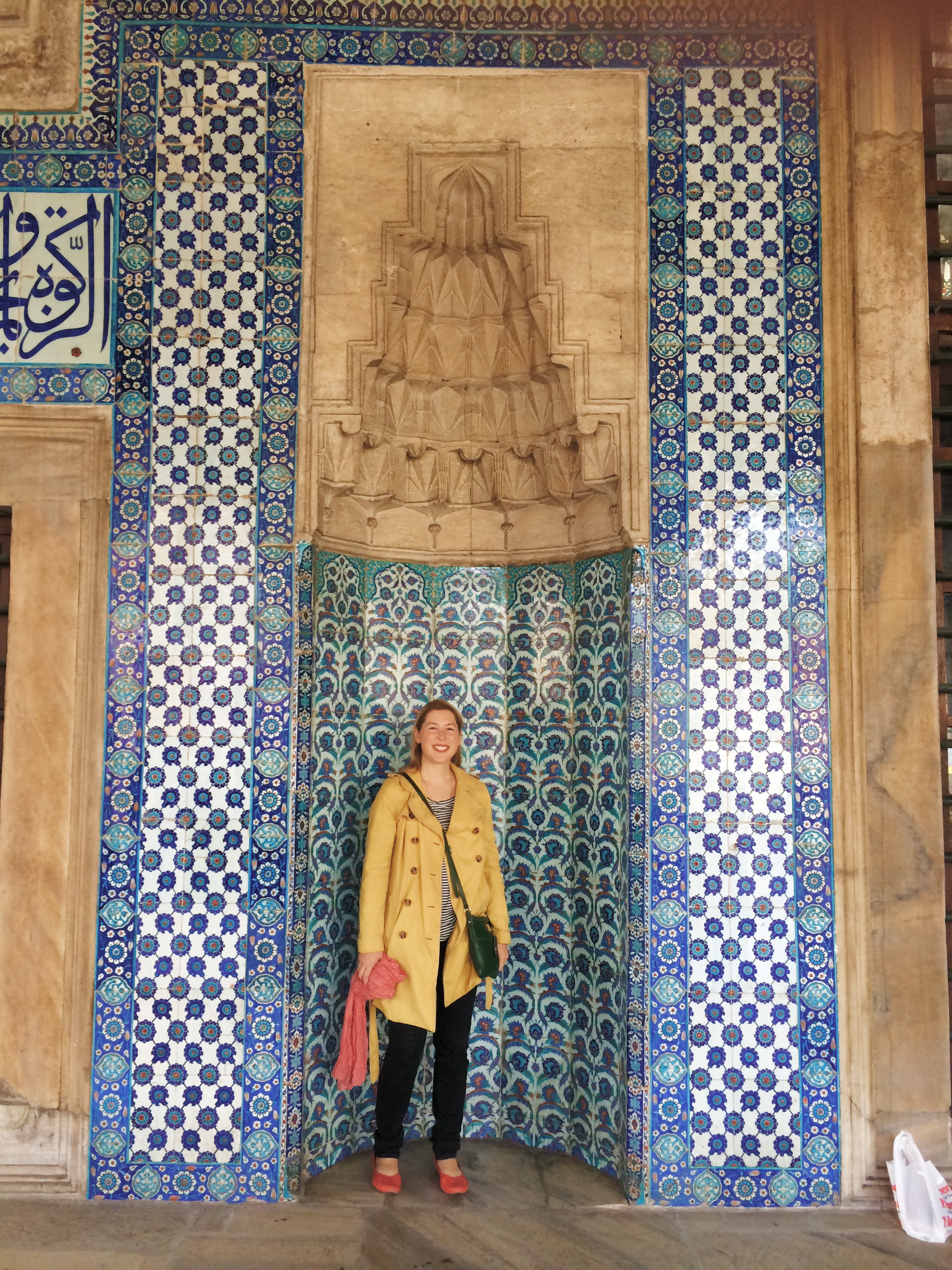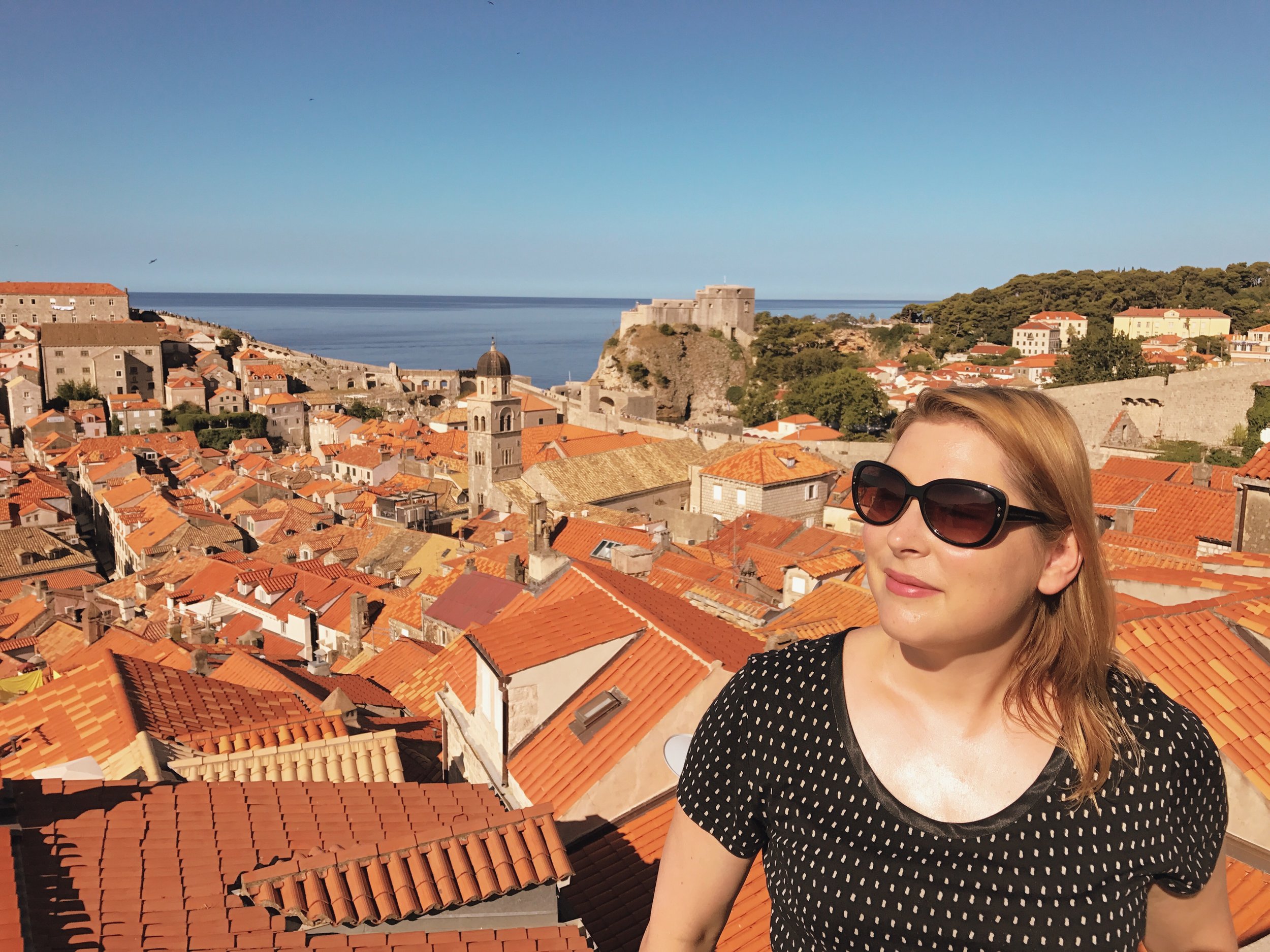Eating in Istanbul: Your Food Guide
Have you ever found yourself flying to another country having done no prep whatsoever? After a manic work week that left no time for travel planning, my plane touched down in Istanbul with me daydreaming about all the delicious falafel I’d eat. But hang on. As I roamed the Ottoman streets, I discovered they don’t eat much falafel in Turkey, and the food varies tremendously across the country’s diverse terrain, from the leafy greens of the Black Sea coast to the chili peppers of Hatay province.
Kuşburnu (rose hips) that Robyn and David came across in Sivas as they were crisscrossing Turkey to write Istanbul and Beyond.
To set the record straight on Turkish cuisine for other travelers, I asked food and travel writer Robyn Eckhart to come on the Postcard Academy podcast to discuss traditional Turkish recipes and Istanbul food culture. We have a lovely chat about her new cookbook: Istanbul and Beyond: Exploring the Diverse Cuisines of Turkey, and create a food guide for your next trip to Istanbul.
Subscribe to the podcast to hear all of Robyn’s insider travel tips. Highlights are captured here. All photos are by David Hagerman, Robyn’s husband and the photographer for their book, Istanbul and Beyond.
If you’re only in the city for the weekend (hopefully this is because you'll be exploring more of Turkey), here’s a sample itinerary on what to eat and drink in Istanbul.
Friday
For epic views, start your evening at a rooftop bar like Balkon, then go have a wander. “Friday night, I might just walk around, get a fish sandwich for dinner, not from the bobbing boats on the Eminönü side, because those are not good, but across the Galata Bridge, from the vendors in front of the Karaköy Fish Market. They make a really nice fish sandwich. You want to ask for a double, which means ‘same amount of bread, double filet,’ so you get the most amount of fish to bread ratio.”
Wandering around İstiklal Caddesi, Istanbul's main pedestrian street in Galata, you’ll find plenty of bars before heading back to your hotel or AirBnB. Once you’re liquored up, Robyn advises indulging in an Islak Burger, which is a ‘wet burger.’ “This is a hamburger where the buns have been soaked in a sort of sauce, and it’s put in a steam case. It sounds awful; it’s a little bit drunk food, but it can be tasty if you’re in the right state of mind. It’s something you have to experience if you’re in Istanbul.”
Fellow vegetarians, fear not. There is food for us, too, like simit, a Turkish bagel. It’s a bread ring, sometimes sesame-seed coated, sometimes braided. “Hot out of the oven, they’re great.” Robyn says. “They’re always sold from carts. If you get a fresh one, it’s wonderful, but too many sold on the street are not fresh. There are just a few bakeries around that still make them, so if you can, get one from a bakery.”
Tost, aka grilled cheese gloriousness.
If you like grilled cheese – and the locals sure do – you will like tost. They serve them on ferries, in cafes, from a Büfe, which are kiosk-type places. “Tost ranges from very basic, like two pieces of bread with some mild cheese inside and pressed in a panini-type press, to more elaborate. Some of the Büfes have an array of ingredients in a display case, and you can choose what you want in your tost. So, you can get mild cheese, and you get a spread of pepper paste, and you can get some roasted chillies.” Try tost at one of the Bambi cafes in the city.
Saturday
Breakfast! Go to Van Kahvaltı Evi, which translates to ‘Van Breakfast Salon,’ in Cihangir. They’re famous for the Otlu Peyniri herb cheese from Turkey’s Van province, near the Iranian border. “You’ll get something that I call in the book ‘toasty scrambled eggs’, which is toasted flour, cooked even toastier in butter, with eggs added.” They also serve menemen, which is eggs in chunky tomato sauce, and kaymak from Van, which is the cream that’s lifted off steaming milk and drizzled with honey.
As a member of Team Savory, rather than Sweet, I love that a traditional Turkish breakfast involves cucumbers, olives, cheeses, and bread. Team Sweet can take comfort in the jams.
Now that you’re nice and full, head to Topkapı Palace, built in the 1400s for the Ottoman sultans. Once upon a time, thousands of cooks worked here and their job was to dream of foods to please their rulers. Before cane or beet sugar came to Turkey, it was a very expensive ingredient, so only the cooks in Topkapi Palace had it. They began creating amazing, layered, syrupy sweets that we associate with Turkish cuisine today.
“They were taking what had been flatbreads, that had been eaten in Anatolia forever, and making these doughs into incredible, thin pastry sheets, yufka, what we know as filo, and making sweet böreks and savoury böreks, meat böreks, with things like raisins, and pine nuts, and all kinds of warm, silk road spices, like allspice and cinnamon. It was just a very luxurious cuisine, that could only have come about if the cooks had access to ingredients from all over this empire, that stretched over a lot of the world.”
Topkapı Palace is pretty empty now, but the tile is cool and you can go into a harem .
Lunch. Since Topkapi Palace is now a museum without all the fancy chefs, so you’ll have to go elsewhere for food. Head back to Galata, and have lunch around Taksim Square at a lokanta. “When offices started opening on the European side of the city, you suddenly had a lot of office workers who could not go home for lunch, but needed a very tasty and cost-friendly way to eat in the middle of the day, that’s when you started to see lokanta, which is from the Italian word, locanda, and esnaf lokanta, working men’s canteens. Tradesmen’s canteens, were places that they could go and get a meal like grandma would make, but in a public setting and at a decent price.” These restaurants are open on the weekends. Try old school Lades, or more contemporary Hayvore. You can also satiate your falafel cravings in this neighborhood at Kikero.
After exploring Galata, previous podcast guest Cenk Sönmezsoy recommends visiting Istanbul Modern if you like contemporary art.
Dinner. And now it is time to eat again. If you want to try a new neighbourhood, Robyn likes Nicole, which is at the top of Tomtom Suites Hotel, in the Tomtom neighbourhood. “The chef, Aylin Yazıcıoğlu, trained in France, and she’s actually a pastry chef, but she does other cooking, too, featuring local ingredients like pekmez, or grape molasses, local tahini, local cheeses, pomegranate molasses, and those sorts of things.”
Jetset between Europe and Asia on the ferries that cross the Bosphorus.
Sunday
If you’re staying on the Europe side of Istanbul, ferry over to Kadıköy in Asia. “Have some tea by the water. In Kadıköy, there’s a nice café by the ferry terminal.”
Now it’s time to explore Kadıköy Market, which has all kinds of wonderful stores. You’ll find cheeses from all over Turkey that they’ll vacuum seal to take home. You’ll also want to buy pul biber, which is crushed red pepper flakes that’s sold at various spice levels. “You should buy some mahlab, which is the ground kernel of a type of wild cherry. It’s likened sometimes to vanilla, and has a scent that’s lovely and warm and hard to describe.” Robyn uses this in her cookbook’s recipe for Syriac spiced bread.
And now it’s time to sample some market pickles, which are a big part of Istanbul food culture. “You can select your pickles, and then you eat them from a glass in the shop, and then you drink the juice. It’s very good for you.” For, ‘Turkish pizza,’ which is called lahmacun, Robyn heads to Halil at the edge of the market (previous podcast guest Katie Parla also says Halil is the best place to try Turkish pizza). “It’s basically a crispy flatbread, spread with a spicy lamb paste, and you eat it with parsley and a little lemon juice,” Robyn says.
Oh, hi, it's me ☺️ Outside the Rüstem Pasha Mosque near the Spice Market. I mentioned above that David took all the photos in this post. This obvious exception was snapped by one of my friends.
When your belly is full, head back to Europe to visit Hagia Sophia (a nearly-1,500 year-old cathedral turned mosque turned museum), the Basilica Cistern, and the Blue Mosque – major sites you cannot miss, and are thankfully near each other. There are plenty of walking tours that hit all these places if you want more guidance. Women, don’t forget to pack scarves to cover your heads if you plan on entering any mosques. Final tip: absolutely spend time soaking up the views of the old city on Galata Bridge – it’s perfect at sunset.
“People ask me, ‘Is it safe to travel to Turkey?’ While it’s true that it’s difficult now because they’re not giving out visas to Americans applying in America, I would say that it is completely safe to go to Istanbul,” Robyn says. “If you would travel to Paris, or Brussels, or Barcelona, you should consider going to Istanbul, if you’re in a position to get a visa, and I hope that situation will be resolved soon. It saddens me to see friends with restaurants and shops hurting for business because people think they can’t go. It’s still a wonderful place.”
Robyn, in the gray hoodie, teaching a cooking class at Chicago's Read It & Eat It culinary book and experience shop.
Thank you, Robyn, for sharing your insider food tips for Istanbul. Find out more about Robyn, her new book, and her other food and travel writing at RobynEckhardt.com, and her blog EatingAsia.
If you found this article useful, please share it, and subscribe to the Postcard Academy podcast. Each week, expats and adventurers share their insider travel tips on the best food, nightlife, and cultural experiences in the most interesting places around the globe. I’m your host, Sarah Mikutel, an American who's spent the last 7 years living in, and traveling around, Europe.








